People and Projects
In our view, the projects we work on and the people who do the work are so tightly coupled that it’s difficult to discuss in isolation. On these pages, you can find out about who we are and what we’re up to.
Meet the Development Team
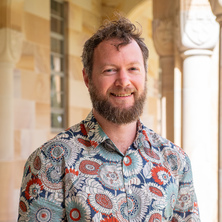
Rowan’s main research area is computational hypersonics. Specific interests include: optimized aerodynamic design; modelling of high-temperature gas effects; study of laminar-to-turbulent transition in high-speed flows; development of novel methods for compressible flow simulation; and development of compressible flow algorithms on novel architectures.
Rowan’s involvement with the GDTk code development began in 2001 with an undergraduate thesis on subsonic boundary conditions for the 2-D compressible flow solver, mb_cns. He now contributes to most aspects of the code base with a particular focus on the high-temperature/multi-temperature gas models, the Newton-Krylov accelerator, and the adjoint solver.
Kyle’s main research interests are in the development of novel algorithms for: (1) the simulation of compressible and reacting flows; and (2) aerodynamic design optimization. He also has interests in automatic differentiation of scientific codes; applications of machine learning to computational fluid dynamics; and high-performance parallel computing on CPU and GPU architectures.
Kyle’s involvement with the GDTk code development began in 2014 with an undergraduate thesis on the application of GPUs to accelerate the calculation of reacting flow simulations for the compressible flow solver, Eilmer3. He now develops and maintains the unstructured code base with a particular focus on the steady-state accelerators (e.g. Newton-Krylov), and the adjoint solver.
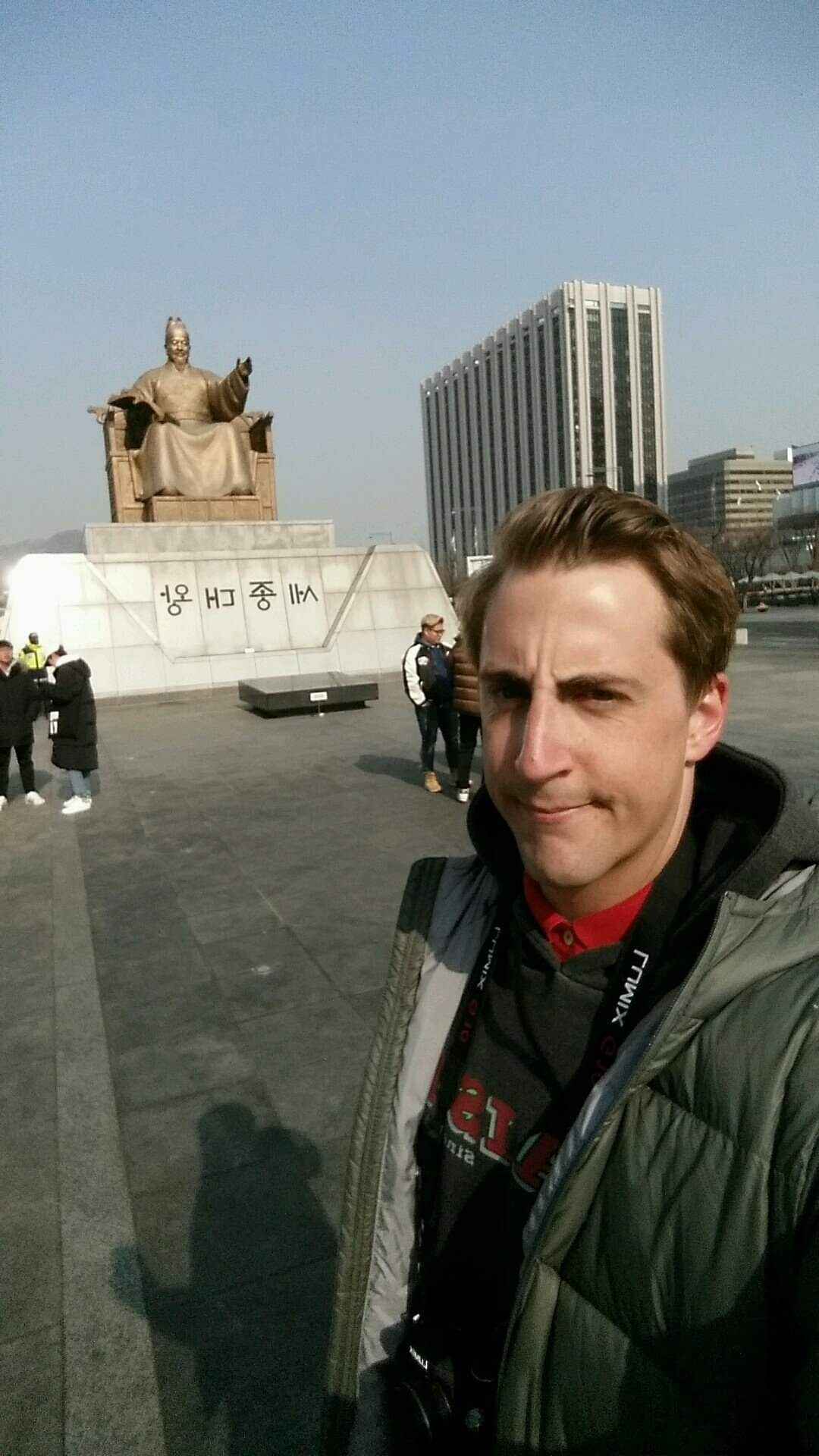
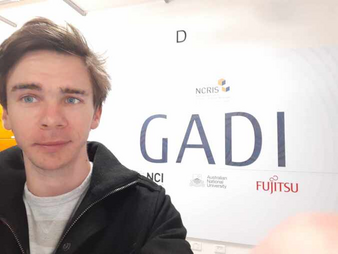
He has been a member of staff at UQ since 1992. Over the past thirty years, the main engineering themes in his research have been the development of numerical models for the simulation of compressible and reacting flows, with special emphasis on hypersonic flight and validation through ground testing facilities. In that time he has been a member of the Hypersonics Research Group and the Energy Group within the School of Mechanical and Mining Engineering.
He has had the pleasure of working for extended periods with aerospace groups in the USA, the UK, France, Germany, and Japan. International exchanges as a member of academic staff have included, Lulea Technical University, Sweden, Tohoku University in Japan, and as a Humboldt Fellow at the German Aerospace Research Center in Goettingen, Germany. In recent years, he has spent time at the Osney Thermofluids Laboratory at Oxford University and the EM2C research group within CNRS, at CentraleSupelec in Paris.
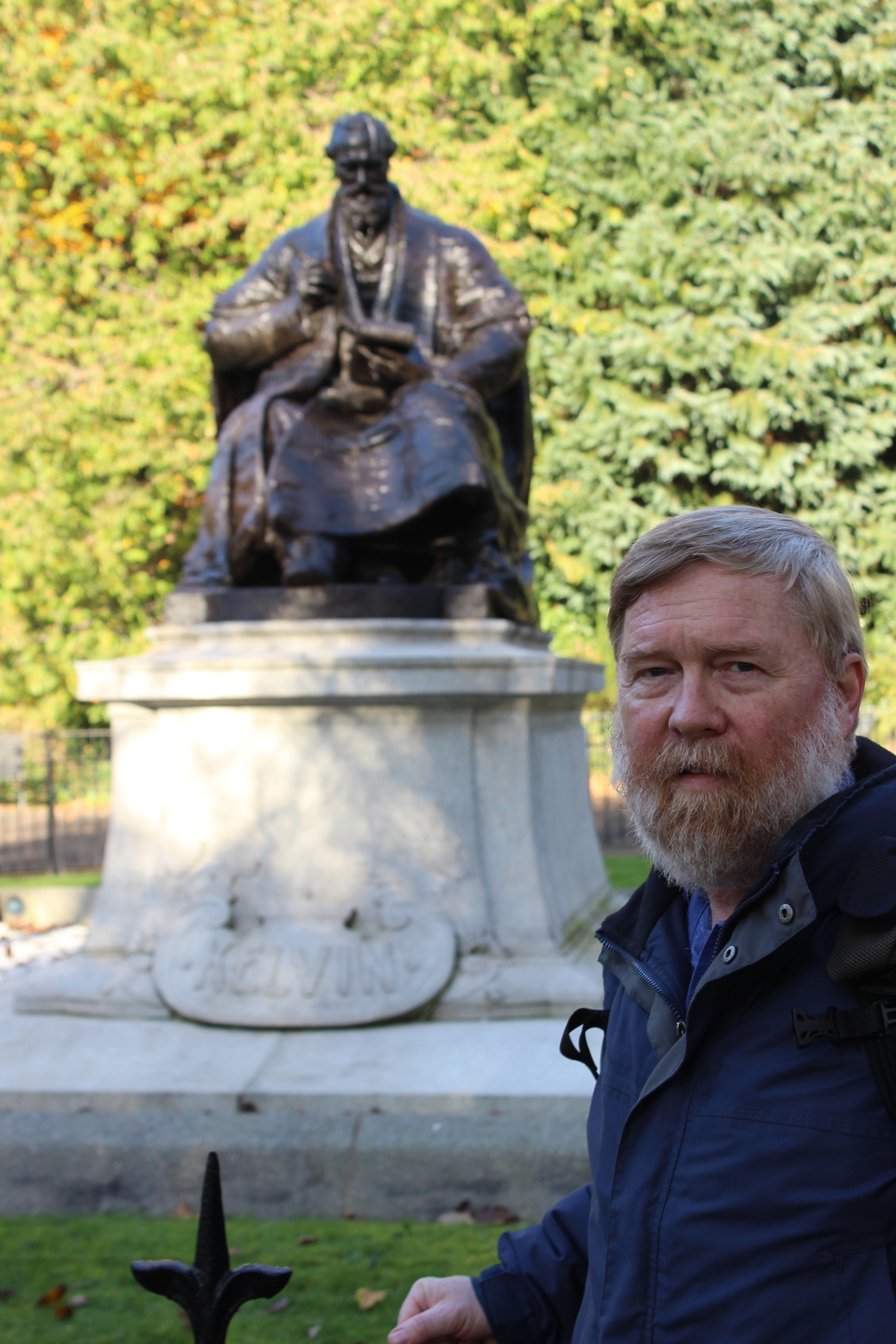
Meet the PhD students
Reece Otto
Reece completed a BE in Mechanical & Aerospace and a B Maths at The University of Queensland. At UQ he has tutored courses in programming, numerical methods and fluid mechanics. During his PhD, he completed a placement at the Defence Science & Technology Group working on the design and optimisation of hypersonic shape-transition inlets.

Lift-over-drag maximisation of a volume-constrained hypersonic lifting body.
Reece’s words on his PhD project…
Scramjet-powered vehicles present unique design challenges due to the extreme flow conditions experienced during hypersonic flight. These challenges create a set of competing design objectives that have non-intuitive trade-offs. To reduce complexity and to increase computational tractability, hypersonic components are often designed using methods that restrict the design space. The adjoint method is an efficient gradient calculation technique that holds promise in overcoming this design barrier. With this technique, it is computationally feasible to perform high-fidelity optimisation with hundreds of geometric parameters. In my thesis, I am extending Eilmer’s adjoint-based optimisation capability to handle more complex, three-dimensional configurations. The goal is to assess the potential of this approach for practical hypersonic design.
Christine Mittler
Christine joined us at the start of 2020 from Germany, just weeks before COVID seriously interrupted life in Australia. Before that, Christine worked for BMW as a CAD Engineer in the Light and Sight Department. Christine has a BSc in Mathematics from Justus-Liebig Universität in Germany and a MSc in Mathematics from Heriot-Watt University in Scotland. Her work with the group specialises in compressible flow algorithm development for novel architectures, namely general purpose graphics processing units (GPUs).
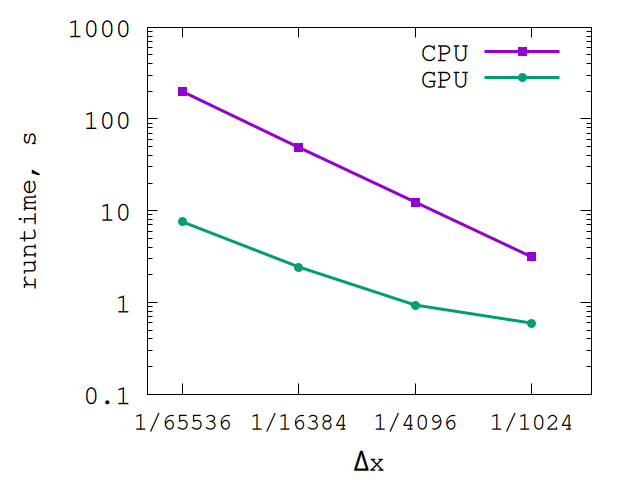
Christine’s words on her PhD project… Since 2020: My project investigates the transition from laminar to turbulent flow in hypersonic regimes. In CFD, there are different techniques to simulate the effects of turbulence: one is Direct Numerical Simulations (DNS). These have the highest physical fidelity but they are extremely expensive computationally. One approach we look to to solve such simulations faster is the use of Graphics processing units (GPUs). In my project, a DNS flow solver for GPUs is being developed to demonstrate the opportunities and challenges of running hypersonic DNS on GPUs. The image to the right shows competitive effectiveness of GPUS compared to CPUs on a representative compressible flow algorithm. The CPU and GPU are from the same era in a chip development. In other words, they represent the best money could buy at the time in their respective classes of architecture.
Robert Watt
Rob has a BE (Hons I) in Mechanical & Aerospace Engineering and a BSc majoring in Physics, both degrees from The University of Queensland. He has interned at the Defence Science and Technology Group. Rob is a tutor at UQ in engineering programming and numerical methods courses. He joined the team in the second half of 2021. Rob’s development contribution focuses on the high-temperature/multi-temperature modelling.
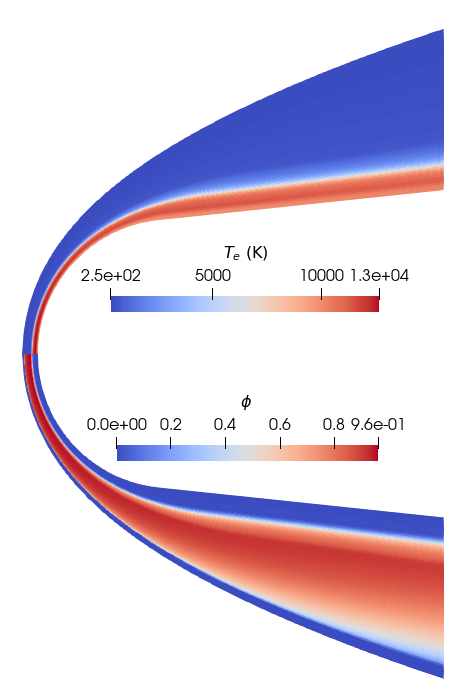
Rob’s words on his PhD project… Flying at hypersonic speeds comes with many challenges. One of these is the extremely high temperatures resulting from the friction between the vehicle and the air. I’m investigating a recently proposed cooling system to address this challenge, called electron transpiration cooling. The idea is to construct the parts of the vehicle which get the hottest with a material that emits a high current of electrons as it gets hot. Each emitted electron carries some energy away from the hot surface, cooling it down. My focus is on developing our simulation capabilities to a point where we can answer engineering questions such as “how much cooler will the surfaces be” or “how much of the vehicle do we need to construct from this material”.
TOP: Colour map of electron temperature.
BOTTOM: Colour map showing degree of thermal nonequilbrium as a factor: (T_e - T)/T
Amir Mittelman
Amir joined us from Israel in April of 2022. He has degrees of BSc and MSc in Aerospace Engineering from the Technion IIT in Israel. Amir’s work in the team is on optimised hypersonic vehicle design when working at the conceptual design phase for a new platform.
Amir’s words on his PhD project… Hypersonic scramjet-propelled vehicles are drawing attention from the worldwide space community as they present the potential for increasing operational flexibility while reducing launch costs. However, complex physical phenomena encountered in the hypersonic flight regime result in a highly coupled and constrained vehicle design space. Introducing all significant disciplinary and interdisciplinary considerations from the beginning of the design process — the conceptual design phase — is imperative for executing a successful and efficient design process.
In this research, the benefits of optimizing the main vehicle characteristics alongside the trajectory characteristics will be demonstrated for a full multi-stage scramjet-propelled launch system. The Multidisciplinary Design Analysis and Optimization (MDAO) Co-design nested architecture will be developed (show in image below). The system performance objective and constraints will be evaluated by solving an Optimal Control Problem (OCP) for each iteration of the outer loop vehicle design optimization problem. Low-fidelity, and therefore computationally cheap analysis tools, which are well suited for the conceptual design phase, will be used for sizing and analysing the vehicle’s physical components. Performing system-level optimization over a large number of design variables will be enabled by utilizing gradient-based optimization methods, along with the Adjoint differentiation method.
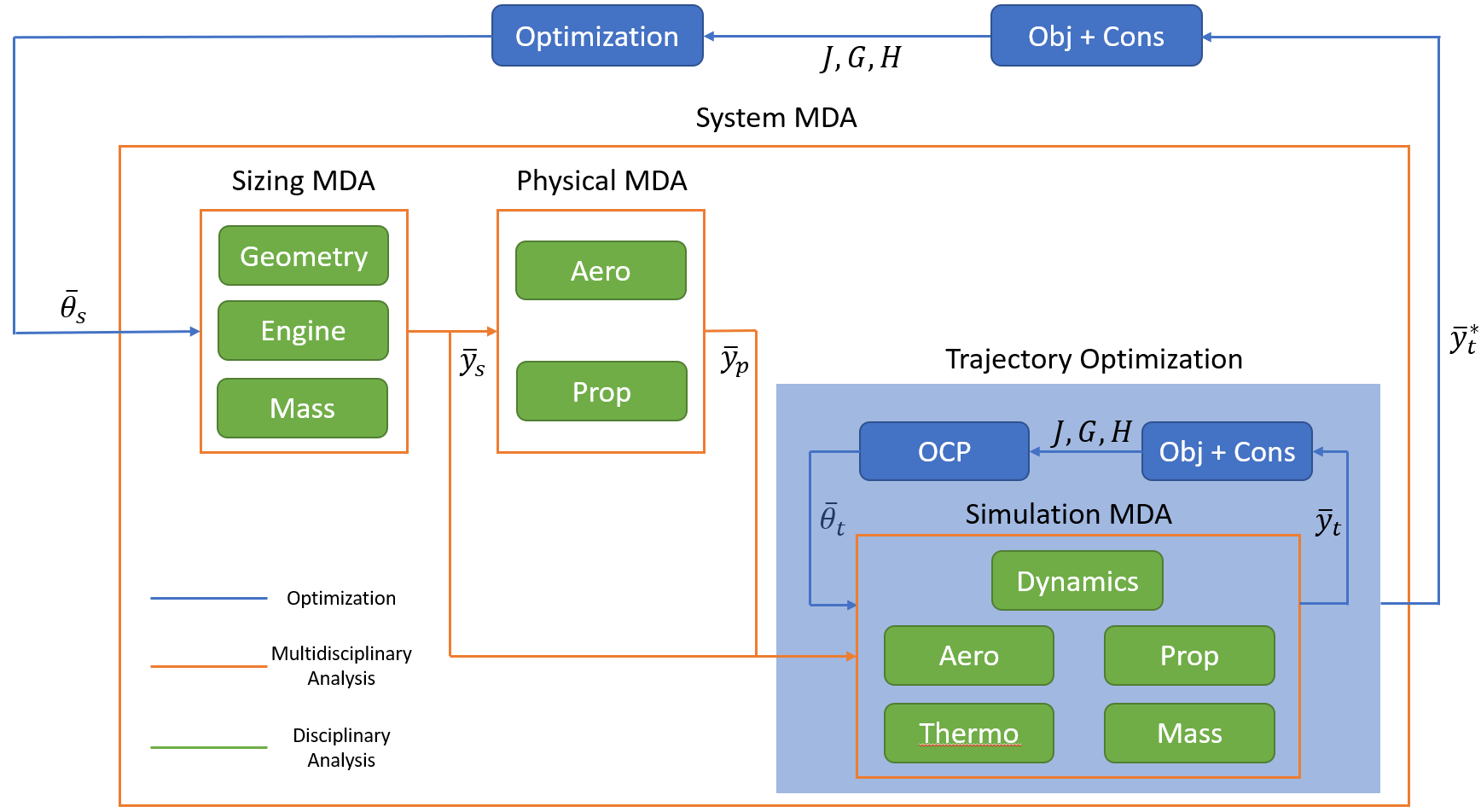
Alex Muirhead
Alex’s words on his PhD project… For my PhD, I’m investigating the use of ray-tracing compute hardware to accelerate the calculation of radiative heating for super-orbital entry vehicles. Our goal is to the predicted radiative signature to improve trajectory estimations from ground-based tracking systems.
Caiyu (Carrie) Xie
Carrie has a BE (Hons I) and ME in Mechanical & Aerospace Engineering. She is active as a tutor for courses in engineering and maths at UQ. Carrie is the most recent PhD student to join us, starting in 2023.
Carrie’s words on her PhD project… Flow surrounding the wall of a blunt body in hypersonic flight departs from local chemical and thermodynamic equilibrium. In the immediate post shock region, equilibrium mechanisms do not have enough time to occur. Downstream of the forebody, flow expands again and induces new non-equilibrium processes. Although the leeward surface experiences lower heating rates than the windward surface in a re-entry capsule, mal protection of leeward surfaces leads to major uncertainties in spacecraft design because of the much larger exposed external surface area. The marked non-equilibrium effects in the expansion region make the assumption of Boltzmann population distribution less tenable. Thus, it becomes necessary to calculate the population distribution from the master equations that govern the particle exchange kinetics among the quantum states. In my project, flows in non-equilibrium expanding regions of blunt bodies are simulated using state specific models.
PhD Graduates
Lachlan Whyborn
Lachlan graduated from the group with his PhD in 2023. Lachlan’s PhD work was on Investigating transient growth of entropy disturbances in the entropy layer of hypersonic blunt cones using Direct Numerical Simulations.
